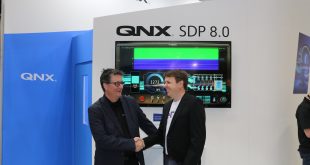Osram Opto Semiconductors is leading the way for automotive lighting with interior LEDs for autonomous vehicles
When it comes to automotive lighting, headlights and turn indicators are the first things that come to mind, a focus on the exterior. However, inside a vehicle is where many important lights can be found. A car’s interior lighting can influence a driver’s concentration, reduce symptoms of fatigue and also transport positive emotions, such as a feeling of luxury or sportiness, connected to the brand. This was confirmed by a survey BMW and the technical University of Ilmenau published several years ago. Now the technical development has caught-up and enables developers to turn these and more options into reality.
![]() The difference LEDs for automotive interior and exterior lighting is that internally, they need to be particularly compact without losing performance, whereas externally the focus is on a larger spread of light. Osram Opto Semiconductors is well positioned to lead the market with innovations and to fulfil the specific requirements of clients. This has resulted in a comprehensive LED portfolio, including innovations such as their latest interior LED, the Topled E1608. Compared to its predecessor it is smaller by factor 20, but up to three and a half times brighter.
The difference LEDs for automotive interior and exterior lighting is that internally, they need to be particularly compact without losing performance, whereas externally the focus is on a larger spread of light. Osram Opto Semiconductors is well positioned to lead the market with innovations and to fulfil the specific requirements of clients. This has resulted in a comprehensive LED portfolio, including innovations such as their latest interior LED, the Topled E1608. Compared to its predecessor it is smaller by factor 20, but up to three and a half times brighter.
When it comes to interior lighting, the general trend in LEDs is miniaturisation is particularly relevant. The smaller the individual components, the greater the flexibility with which they can be incorporated in a new product, and the greater the versatility with which the LED can be used. Manufacturers are also increasingly seeing demands from end customers for new personal driving experiences. Ambient lighting enables drivers to select personalised colours for their interior lighting. This ability to customise the lighting adds an emotional component to the rather more functional use of traditional interior lighting. This touch of personality within the vehicle transforms the car from something to merely serving a function to a feel-good zone.
In addition to these decorative aspects, there are new areas of application for ambient lighting at the functional level. For example, cars could soon be using different colour lighting to tell drivers they are in sports or economy mode. Another possibility is that dynamic lighting sequences could be used in semi-autonomous vehicles to tell the driver to take control of the steering wheel, or to relay some other information.
In keeping with the idea of dynamic lighting in autonomous vehicles, interior lights will shift role in their functionality significantly. Depending on whether the passenger wants to work or relax, for example, the lighting scenarios will be very different, with either directional spotlights over a workstation or indirect lighting in the roof liner.
As this technology becomes more commonplace, and with the emergence of several companies looking to introduce autonomous vehicles, numerous new applications will also appear in the visualisation sector. Ford and other companies have already predicted, it’s conceivable that heads-up displays and thin film transistor displays will in future not only present navigation and vehicle information but also be used for communication and entertainment purposes.
With regards to the future, the focus on interior lighting will focus more and more on the interplay between light and the vehicle for conveying information. This information will relate to everything from the current driving mode and battery charge level to the time of day and the weather. Osram Opto Semiconductors will be aiming to maintain and extend its technological lead through a combination of LEDs and integrated electronics or implementing smart lighting components.
 CIE Components in Electronics
CIE Components in Electronics



